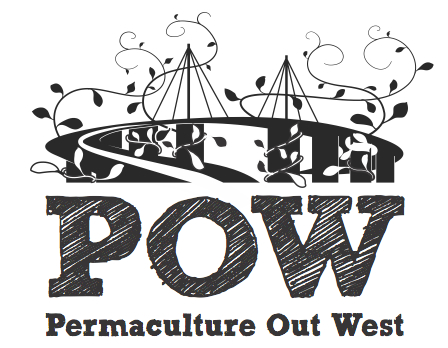Radio National had an interview last week about aboriginal astronomy on Ockham’s Razor. Ray Norris from the CSIRO Australia Telescope National Facility pointed out that Aboriginal Australians have the oldest continuous culture in the world, and their Dreaming stories have amazing depth of knowledge about the sky. One of things he discusses in his new book “Emu Dreaming – An Introduction to Australian Aboriginal Astronomy” is the calendars used by the Aboriginals. Aboriginal calendars tend to be more complex than those used by Europeans. The seasons were marked by things like particular stars or constellations in the sky. Sometime the calendars are about particular foods and harvests.
I went searching on the internet for more information and came across a seasonal calendar for Melbourne. Wurundjeri people are the traditional owners of the territory from north of the Great Dividing Range, east to Mount Baw Baw, south to Mordialloc Creek and west to Werribee River.
The seasonal calendar for Melbourne was compiled by Dr. Beth Gott of the School of Biological Sciences, Monash University.
See http://home.vicnet.net.au/~herring/seasons.htm
High Summer November, December, January
WARRA WARRAP/GARRONG, late Black Wattle, with pale yellow blossoms, flowered in November.
As the summer advanced, the land began to dry, and people congregated around the reliable water-sources, the creeks, rivers and billabongs.
Fish was an important food – Galaxias moved up the river from the sea.
Where rocky falls blocked the river, as in the Prince’s Bridge area and at Dight’s Fails, fish would accumulate in large numbers, and could be easily taken.
Eels started to come downriver. Fish traps were set.
Water sources were important for the wildlife, so large animals such as Kangaroos and Emus would come to drink and could be caught.
Lizards and snakes were active.
Grasses flowered – Kangaroo Grass, Wallaby Grass, Spear Grass, Tussock Grass and the Common Reed.
Fruits ripened -, MORR – Currant-bush
GARRAWANG – Apple-berry, White Elderberry, Kangaroo Apples and
Sweet LAAP – Manna, could be collected beneath the WURUN – Manna Gums
Small tuberous plants died back, but the women still knew where they could dig for their roots, which at this time were at their best. .
When people went up into the mountain gullies for firedrills, they ate pith from the centre of treeferns. In warm weather, big shelters were not needed unless it rained.
Late Summer, February – Mid March
Autumn rains arrived and days became cooler. Plants now able to renew growth.
Burning where scrub or tussock grass had become too dense to clear the undergrowth and provide fertilising ash so the small tuberous food plants could grow after the rains came in March. Burning also made it easier to catch animals.
DJAAK, Wattle gum , was plentiful, and in the middle of this month the WARRAK Banksia or Honeysuckle, Long-leaf Box and Silver-leaf Stringybark came into blossom, providing sweet nectar, and attracting birds.
March – the female Short-finned eels moving down the streams to the sea; the male eels had been leaving in smaller numbers during the spring and summer. These were an important food, and among the vegetables there were the starchy roots of the water plants, which began to die down after their summer growth.
Some late summer fruits such as Mistletoe berries were also available. Birds started to flock before heading north for the winter, to be replaced by other birds which will soon start to arrive from Tasmania.
Early Winter, April & May
All sorts of fungi appeared with the rains, while the ground was still warm.
BUNJIL, the Eagle, was building his nest
Brush-tail and Ringtail Possums were mating
Bolin Bolin billabong started to fill.
Many different moths emerged, and were food for birds during the day and for Sugar and Feathertail gliders at night.
Eastern Grey Kangaroos and Wallabies fed on the new growth.
Deep Winter- June, mid July
Echidnas were breeding, birds nesting.
The flats near the rivers and creeks were often flooded;
Low lands generally were wet and cold, unsuitable for camping, so people moved to the best sheltered spots on the uplands, where they were able to catch koalas, possums, and wombats, and to find grubs in the trees
The leaves of the water plants had become dry and brown, but the small tuberous herbs were green and growing; the roots of both were good food.
Fragrant nectar came from BURGIL BURGIL, Honey-pots, Acrotriche serrulata, a small shrub which hid its flowers close to the ground.
BULAIT- Cherry Ballart formed fruit.
People constructed good bark WILLAMS (shelters) and kept fires burning for warmth.
They wrapped themselves in rugs made from possum skins.
Early Spring – Mid July, August
Mid-July, MUYAN, Silver Wattle, started to flower, the first wattles to do so. It earned the name of ‘Barak’s Wattle’ because when he died at Coranderrk on August 15th 1903, MUYAN was in full golden bloom.
YELLOW BOX also flowered, providing much nectar.
EARLY NANCY was the first of the small food plants to flower
By late August MURNONG was budding.
People moved slowly towards the lower lands as the spring temperatures rose, there they were able to snare ducks, to catch other kinds of wild-fowl, and,
as the season advanced, they would get eggs from the nests of all kinds of birds.
True Spring- September, October
A time of plenty. Lilies, Orchids and MURNONG flowered, and still provided root vegetables. Greens were consumed in large quantities.
Flowers everywhere -Wattles, Hop Goodenia, Burgan, Kangaroo Apple, as well as orchids and small lilies which had been building their tubers over the winter.
Snakes and Lizards became active, young Kangaroos came out of the pouch.
Migrant birds – the Sacred Kingfisher for example, returned from the north.
Tadpoles appeared in ponds, and the river, fed by melting snows from the mountains
Water-plants put on green leaves. Nowadays this flooding is prevented by dams
